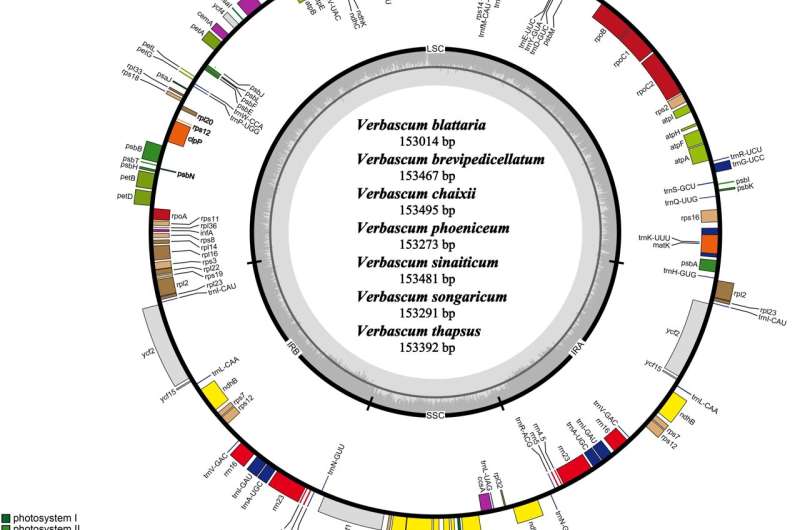
The genus Verbascum (Scrophulariaceae, Lamiales), often referred to as Mullein, comprises about 360 species widely distributed in temperate regions in Europe, Africa, and Asia. The generic circumscriptions and location of the genus Verbascum is a challenge that has been the focus of debate among researchers. The genus Verbascum is still poorly understood and new species are described regularly. The taxonomy of Verbascum has been a source of contention, and it varies depending on the treatment.
To understand the evolutionary relations of Verbascum species and other species in order Lamiales. Researchers from the Wuhan Botanical Garden of the Chinese Academy of Sciences (CAS) analyzed the complete chloroplast (cp) genomes of the eight samples of Verbascum.
The complete plastomes of the seven species were typical circular double-stranded structures and ranged from 153,014 bp in V. blattaria to 153,291 bp in V. chaixii. All plastomes encoded 114 unique genes, comprising 80 protein-coding genes, 30 tRNA genes (Transfer RNAs genes), and four rRNA genes (Ribosomal RNA genes).
Although the plastid genome structure of Verbascum is generally conserved and stable, a total of 348 simple sequence repeat loci were still detected in seven species, and these regions were expected to be developed as important molecular markers for Lamiales. Based on the phylogenetic results, the species status of V. brevipedicellatum (Engl.) Hub.-Mor was reinstated.
In addition, the researchers suggested the reinstatement of the families Phyramaceae and Mazaceae because they formed separate clades with high bootstrap support values. Notably, their divergence period was also different. Mazaceae diverged early compared to Phyramaceae species.
This study elucidates the relationship of various families as well as the divergence time estimate in order Lamiales.
The study, titled “Taxonomy, Comparative Genomics of Mullein (Verbascum, Scrophulariaceae), with implications for the evolution of Verbascum and Lamiales,” was published in BMC Genomics.
Complete chloroplast genome of sympetalous plant from Central China
Xiang Dong et al, Taxonomy, comparative genomics of Mullein (Verbascum, Scrophulariaceae), with implications for the evolution of Verbascum and Lamiales, BMC Genomics (2022). DOI: 10.1186/s12864-022-08799-9
Chinese Academy of Sciences
Citation:
Research untangles evolutionary history of Mullein plant species from China and Kenya (2022, October 20)
retrieved 20 October 2022
from https://phys.org/news/2022-10-untangles-evolutionary-history-mullein-species.html
This document is subject to copyright. Apart from any fair dealing for the purpose of private study or research, no
part may be reproduced without the written permission. The content is provided for information purposes only.



















Discussion about this post